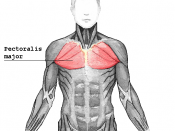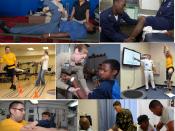Arthrogryposis, also known as Arthrogryposis Multiplex Congenita, is a muscle disorder that causes multiple joint contractures at birth. A contracture is a limitation in the range of motion of a joint.
All cases are different. In a severe case, many joints can be affected and there could be a minimal range of motion while in some other cases, few joints may be affected and the range of motion may be nearly normal. In the "classic" or less severe case of arthrogryposis, hands, wrists, elbows, shoulders, hips, feet and knees are affected. In the most severe cases, nearly every body joint may be involved, including the jaw and back. Most of the time, the contractures are accompanied by a muscle weakness, which also limits movement.
Arthrogryposis is usually not a genetic condition and usually does not occur in the same family more than once, but, in about 30% of these cases, a genetic cause can be identified.
Research has shown that anything that prevents normal joint movement before birth can result in joint contractures. The joint itself may be normal, but, when a joint has not moved for a period of time, extra connective tissue grows around the joint, which causes the joint to stay in one position. If there is a lack of joint movement, this means that tendons connecting to the joint are not stretched to their normal length. These short tendons make normal joint movements difficult. A person that has worn a cast for a long period of time can relate to this because when someone is in a cast, their joints are fixed and they can't move them. Once the cast is taken off, the joints that were in the cast are very hard to move because the tendons have not been stretched for a long...


